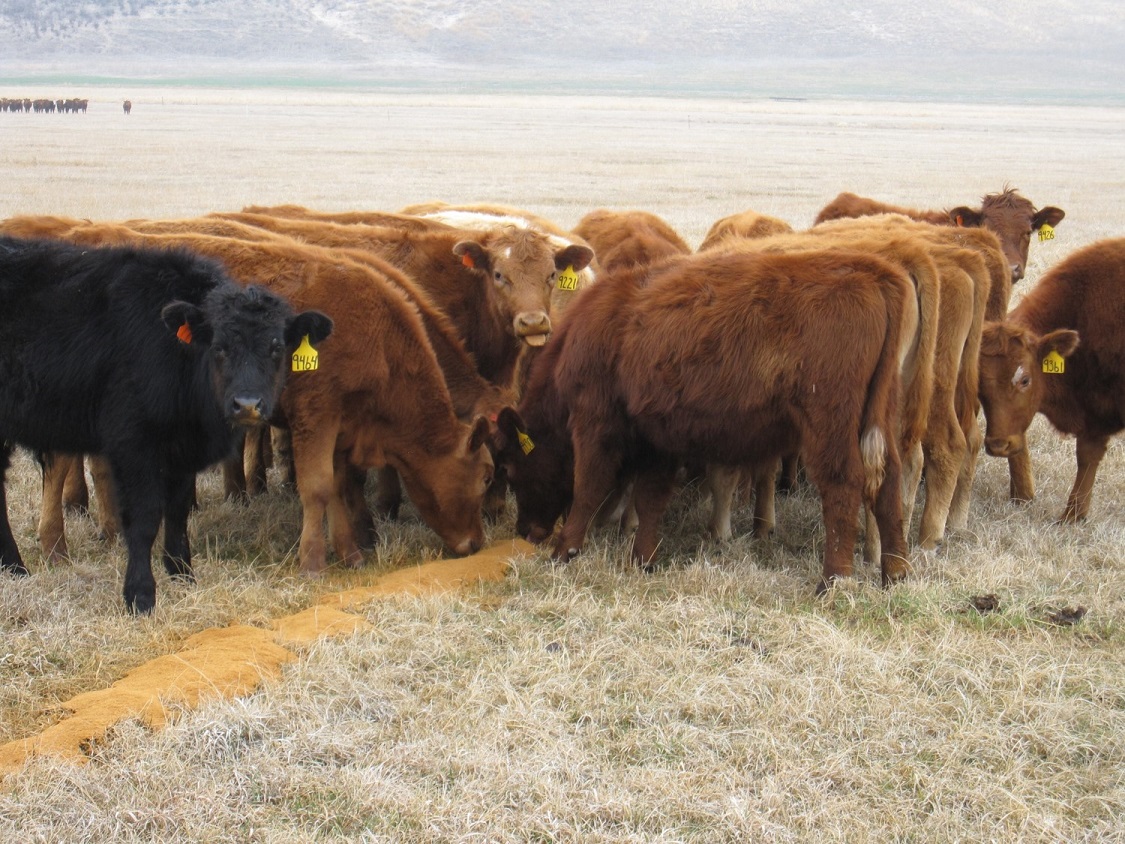
This is a review of three research studies conducted at the University of Nebraska that evaluated feeding modified distillers grains with solubles to yearling cattle grazing summer range. Summarized by Aaron Berger, Nebraska Extension Educator
Looking to improve average daily gains of yearlings grazing summer grass while reducing cost of gain? Consider supplementing modified distillers grains. Research studies from the University of Nebraska showed that feeding modified distillers grains with solubles (MDGS) can replace a portion of summer grazed forage while improving average daily gain and potentially reducing overall cost of gain. The interaction between pasture price, MDGS price, value of gain and how cattle will be marketed all impact the profitability of this management practice.
These studies occurred on Sandhills upland rangeland with yearling cattle. The upland pastures were predominately warm-season grasses. One study occurred over three consecutive summers with long yearling steers at the University of Nebraska Barta Brothers Ranch located near Rose, Nebraska. In this study, MDGS was fed on the ground with a tractor and a feed wagon.
A second study occurred with spayed yearling heifers for two years at the Gudmundsen Sandhills Laboratory near Whitman, Nebraska. A third study with spayed heifers also took place for two years at the Barta Brothers Ranch. At both locations, spayed yearling heifers were fed MDGS on the ground. In the study involving spayed yearling heifer at the Gudmundsen Sandhills Laboratory, one group of heifers was fed MDGS on the ground and another group of heifers was fed in a bunk to estimate loss that occurred from feeding on the ground based on differences in animal performance.
SUMMARY
1. Yearlings in these studies were supplemented at 0.6% of body weight on a dry matter basis of MDGS daily in addition to grazed native Sandhills upland range.
2. From these studies, it was estimated that 1 pound of MDGS replaced approximately 0.65 pounds of grazed forage (dry matter basis) or approximately 15-16% of forage needs when MDGS was fed at 0.6% of body weight. Feeding MDGS replaces a portion of grazed grass and allows for higher stocking rates on pasture.
3. Supplemented steers gained 0.68 pounds more per head per day than non-supplemented steers. Supplemented heifers gained from 0.44 to 1.26 pounds more per head per day than non-supplemented heifers depending upon the study.
4. In the study that compared feeding in the bunk to feeding on the ground, there was an estimated 4-5% loss from feeding MDGS on the ground based on a numerical difference of 0.12 pounds per head per day in cattle performance. Other studies have estimated a 5-20% loss when comparing feeding modified or wet distillers grains in a bunk versus on the ground.
5. There was no visual detriment to rangeland where MDGS was fed on the ground. In both studies, the location of feeding was moved around the pastures to reduce the trampling effect.
6. The value of grazed forage saved from supplementing with MDGS at 0.6% of body weight, plus the improved average daily gain of cattle can effectively reduce cost of gain and improve profitability. Factors impacting the profitability of this practice include forage value, cost of distillers grains, cost of delivery of supplement, value of gain and cattle performance.
Results from these studies would indicate that feeding modified distillers grains plus solubles can be a cost effective way to stretch forage supplies and improve performance of yearling cattle grazing Sandhills upland range. Ethanol co-products such as modified distillers grains plus solubles can be a cost effective fiber based protein and energy source that complement grazing resources. Producers grazing yearling cattle may want to evaluate the potential cost and benefits of supplementing ethanol co-products to yearling cattle grazing summer pasture.
For more information on the study involving steers, see:
2011 Nebraska Beef Cattle Report “Supplementing Modified Wet Distillers Grains with Solubles to Long Yearling Steers Grazing Native Range” (http://go.unl.edu/jc4h)
2012 Nebraska Beef Cattle Report “Grazing Supplementation and Subsequent Feedlot Sorting of Yearling Cattle.” (http://go.unl.edu/vprn)
For more information on the spayed heifer studies, see:
2013 Nebraska Beef Cattle Report “Replacement of Grazed Forage and Animal Performance When Distillers Grains are Fed in a Bunk or on the Ground on Summer Range” (http://go.unl.edu/0os2)
2014 Nebraska Beef Cattle Report “Economics of Distillers Grains Supplementation in a Forage System with Spayed Heifers” (http://go.unl.edu/mf7g)
To listen to BeefWatch podcasts go to: https://itunes.apple.com/us/podcast/unl-beefwatch/id964198047 or paste http://feeds.feedburner.com/unlbeefwatch into your podcast app.